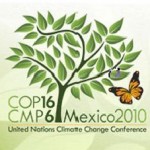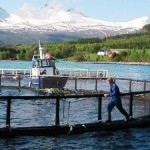 Champaign, Illinois – Those making land use decisions to reduce the harmful effects of climate change have focused almost exclusively on greenhouse gases – analyzing, for example, how much carbon dioxide is released when a forest is cleared to grow crops. A new study in ‘Nature Climate Change’ aims to present a more complete picture – to incorporate other characteristics of ecosystems that also influence climate.
Champaign, Illinois – Those making land use decisions to reduce the harmful effects of climate change have focused almost exclusively on greenhouse gases – analyzing, for example, how much carbon dioxide is released when a forest is cleared to grow crops. A new study in ‘Nature Climate Change’ aims to present a more complete picture – to incorporate other characteristics of ecosystems that also influence climate.
“We know that forests store a lot of carbon and clearing a forest releases carbon dioxide into the atmosphere and contributes to climate change,” said University of Illinois postdoctoral researcher Kristina Anderson-Teixeira, who pioneered the new approach with plant biology and Energy Biosciences Institute professor Evan DeLucia. “But ecosystems provide other climate regulation services as well.”
The climate effects of a particular ecosystem also depend on its physical attributes, she said. One such attribute is its reflectivity, a quality climate scientists call albedo.
“If you think of an open snow-covered field or bare sandy soil, that ground acts somewhat like a mirror, reflecting solar radiation back to space,” Anderson-Teixeira said. “In contrast, a forest is dark and absorbs a lot of solar radiation. In that sense, any type of vegetation is going to warm the land surface to some extent.”
Another factor that should be considered is an ecosystem’s ability to release heat through the evaporation of water. The more water is available in an ecosystem, the more it cools itself by evapotranspiration or, as DeLucia puts it, “planetary sweating”.
“It takes a great deal of energy to convert liquid water to vapor, and this transition cools the soil and the surface of leaves as water evaporates, in the same way that sweating cools your skin,” said DeLucia, who also is an affiliate of the Institute for Genomic Biology at Illinois.
Scientists have known about biophysical effects for a long time, Anderson-Teixeira said. “But the challenge has been to incorporate them into a single metric that will help us design land-use policies that are going to help mitigate – and not exacerbate – climate change.”
 To tackle this problem, Anderson-Teixeira and DeLucia teamed with University of Minnesota professors Peter Snyder and Tracy Twine; professor Santiago Cuadra, of the Federal Center of Technological Education in Rio de Janeiro; and professor Marcos Costa, of the Ministry of Science, Technology and Innovation in Brazil. The researchers compiled data to calculate the “greenhouse gas value” of 18 “ecoregions” across North and South America, and also modeled the ecoregions’ biophysical characteristics. They looked at several types of forest, as well as grassland, tundra, tropical savanna and agricultural crops, such as soy, sugarcane, corn, miscanthus and switchgrass.
To tackle this problem, Anderson-Teixeira and DeLucia teamed with University of Minnesota professors Peter Snyder and Tracy Twine; professor Santiago Cuadra, of the Federal Center of Technological Education in Rio de Janeiro; and professor Marcos Costa, of the Ministry of Science, Technology and Innovation in Brazil. The researchers compiled data to calculate the “greenhouse gas value” of 18 “ecoregions” across North and South America, and also modeled the ecoregions’ biophysical characteristics. They looked at several types of forest, as well as grassland, tundra, tropical savanna and agricultural crops, such as soy, sugarcane, corn, miscanthus and switchgrass.
“The challenge of combining the greenhouse gases with the biophysical effects is that they operate over very different spatial and temporal scales,” Anderson-Teixeira said. To integrate the two, the researchers first divided the local biophysical effects by the global land surface area. They then combined the measures and converted the values into carbon dioxide equivalents, a common currency in the world of climate mitigation.
The researchers found that biophysical attributes make a tropical rainforest even more valuable for protection against climate warming, but lessen the climate value of boreal (evergreen) forests in Canada.
Any forest provides a climate service by storing carbon, the researchers said, but forests also absorb more solar radiation than bare ground. Tropical forests cool the land by evapotranspiration, but northern boreal forests have much lower evapotranspiration and are dark in comparison to open spaces. These factors give Amazon forests “the highest climate regulation value of all the ecoregions we studied”, Anderson-Teixeira said.
Crops also have an enhanced climate-regulating value when their biophysical attributes are considered, DeLucia said.
“When considering only their effect on greenhouse gases, annually tilled row crops like corn tend to have a warming effect by contributing large quantities of nitrous oxide and carbon dioxide to the atmosphere,” he said. “But when you factor in the ability to reflect solar energy and high rates of evapotranspiration, the net effect (compared with bare ground) is cooling.”
Ecosystems perform a lot of other services of importance to humans and the planet, DeLucia said.
“While the climate-regulating value that we propose in this paper captures how ecosystems affect climate, it is important to note that this is only one of many services ecosystems provide,” he said. “Ultimately, the value of any given ecosystem to society must include these other services, including biodiversity, water purification and the production of food and fiber, to name just a few.”
The researchers note that theirs is not the only valid way to quantify the climate services various ecosystems offer. But it captures more of the picture than previous methods have.
“We hope that this approach will help to design land-use policies that protect the climate,” Anderson-Teixeira said.
The paper, “Climate Regulation Services of Natural and Agricultural Ecoregions of the Americas,” is available from the University of Illinois News Bureau.
Source: University of Illinois at Urbana-Champaign.














